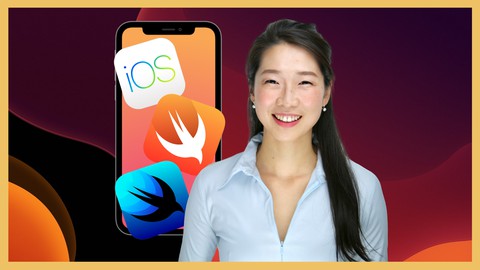What Is Intrinsic Content Size In The Interface Builder?
Intrinsic content size is defined as the natural amount of space a view will take. Not all views have intrinsic content sizes.
For example, a UILabel has the intrinsic content size of its text and some margin. If you changed the text, the font size or the font style, the intrinsic content size will change.
Intrinsic content size is important because it allows views to determine their ideal height and width without us having to manually define it. This is especially useful in text views, for example in a messaging app.
Here is a list of views that have intrinsic content sizes:
- Sliders
- Labels
- Buttons
- Switches
- Textfields
- Textviews
- Imageviews
Note that UIViews (or NSViews) do not have intrinsic content sizes.
Auto layout will use a views intrinsic content size to correctly size the view. However, there are times when a view doesn’t have enough space or has too much space. What should Auto Layout do then?
There are two concepts called Content Compression Resistance and Content Hugging that determine the size in these scenarios.
Content Compression Resistance
This sets the priority of how much a view resists being made smaller than its intrinsic size. If we set this to a higher value, that means we don’t want this view to shrink smaller than its intrinsic content size.
For example, if a label had a width constraint that squeezed forced some of the text to be cut off, we could fix this by adding a content compression resistance that has a higher priority than its width constraint. This will ensure the text is always visible and that the label will expand to fit the text.
Content Hugging
This sets the priority of how much a view resists being made larger than its intrinsic size. If we set this to a higher value that means we don’t want this view to grow larger than its intrinsic content size.
For example, a label had a width constraint that makes it take up the whole width of the screen despite it only having one word in it. To make this label’s width constrain to its text, we could make its content hugging priority higher than the width constraint priority.
This way, the label’s width will be whatever its intrinsic content size is. However, it still has the option to expand up to the whole screen width if there’s more text.
Eddy Chung
Similar Posts
- How To Change UI Slider Thumb Image In Swift Programmatically
- How To Change Text Or Title Of UIButton in Swift Programmatically
- How To Change UI Button Image In Swift Programmatically
- How To Detect Change In UITextField Swift
- How To Handle Touch Or Click Events On UILabels In Swift Programmatically
- How To Set UILabel Color In Swift Programmatically
- How to use Xcode’s Interface Builder – Ultimate Guide
- Best Backend For iOS App
- 10 Steps To Become An iOS Developer With No Experience
- Build An Alert Dialog Box With Text Input In Swift

The Complete iOS App Development Bootcamp
Disclosure: This website may contain affiliate links, meaning when you click the links and make a purchase, we receive a commission.